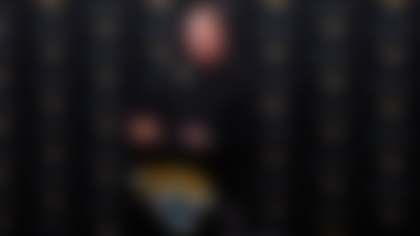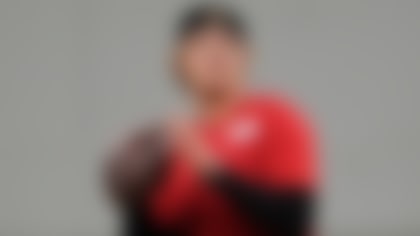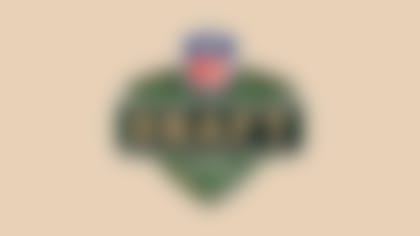The NFL is continuing this summer its legacy of visiting U.S. military troops overseas. Forty-four years after the first trip, with more than 160 active and former players having traveled to more than 20 countries on USO tours, the NFL-USO partnership is continuing to break new ground. This current summer tour to Afghanistan represents the second time the NFL has brought a group of coaches overseas to visit the troops.
The NFL's Director of Community Affairs, David Krichavsky, is accompanying four current NFL head coaches - Minnesota's Brad Childress, Carolina's John Fox, Cincinnati's Marvin Lewis, and Philadelphia's Andy Reid - on a tour of U.S. military bases in the Persian Gulf.
In 1966, NFL Commissioner Pete Rozelle conceived of the idea of sending NFL players on "goodwill" tours to visit U.S. troops, then fighting in Vietnam. Four future Hall of Fame players - Johnny Unitas, Willie Davis, Sam Huff, and Frank Gifford - participated on that first NFL-USO tour in 1966. In the years that followed, many NFL players including Bart Starr, Jack Kemp, Dick Butkus, Gene Upshaw, Archie Manning, Franco Harris, Rocky Bleier, Jerome Bettis, Warrick Dunn and Drew Brees have visited our fighting forces stationed in every corner of the globe. Commissioner Roger Goodell traveled on a USO tour to Iraq and Afghanistan in the summer of 2008, becoming the first pro sports commissioner to participate in a USO tour abroad.
Despite the NFL's long and successful partnership with the USO, it was not until last summer that the two organizations came together for their first Coaches tour. As part of that inaugural NFL-USO Coaches tour, Bill Cowher, Tom Coughlin, Jeff Fisher, Jon Gruden, and John Harbaugh traveled to Iraq over the July 4th holiday. The five coaches visited with thousands of troops in Iraq and significantly boosted morale. They signed autographs and took pictures with the troops - and created memories that will last a lifetime.
The coaches also came back changed. They had a new appreciation for the dedication and sacrifice of our troops, after seeing those qualities firsthand. The coaches discussed their USO tour experiences with their peers - other NFL coaches. It became inevitable that the first NFL-USO Coaches tour would not be the last. It just might become an annual tradition.
Day 1
The 2010 NFL-USO Coaches tour began with this year's coaches traveling to Washington, D.C., where the group met up and took a commercial airline flight to Frankfurt, Germany. After clearing customs in Frankfurt, the group was met by military escorts who brought us by bus to Ramstein Air Base, approximately an hour outside Frankfurt. Ramstein is a major U.S. military installation, with 75,000 troops stationed there. Ramstein also is home to one of the busiest and most important hospitals in the world, Landstuhl Regional Medical Center (LRMC), which serves U.S. and NATO forces injured in Iraq and Afghanistan. Landstuhl is frequently where our most severely wounded come after getting stabilized in battlefield hospitals, and before being sent home to the U.S. for further treatment at Walter Reed Medical Center or Bethesda Naval Medical Center.
We arrived at Ramstein mid-morning, and after having a bit of time to clean up and eat lunch, our group was off to Landstuhl to visit with the patients and staff. Visiting the medical hospital could have been a depressing experience, as we saw patients with gruesome injuries such as bullet wounds, broken backs, severe burns, and lost and shattered limps. But no one we met in the hospital had a shattered spirit. In fact, nearly all the injured troops we met with expressed a fierce desire to heal and get back on the battlefield. As Marvin Lewis said, "the attitudes of the guys, to want to get back out there with their brothers, is absolutely remarkable."
"Thanks" and "appreciation" were consistent themes during our visit at Landstuhl - as is often the case on USO tours. The NFL coaches couldn't express their gratitude enough to the wounded warriors they met. But at the same time, the troops kept telling the coaches how appreciative they were for the visit. Corporal Richard Cecil of Kentucky, whose femur had been broken in multiple places after a rocket-propelled grenade (RPG) hit his truck in Afghanistan, was like nearly all the troops in thinking about others rather than himself. "I appreciate you guys stopping by," he said. "But they'll really appreciate it even more downrange [in the active war theater]. It'll be a real taste of home for them."
There were also moments of levity at the hospital:
» The coaches visited with a group of Australians (as the hospital treats our allies as well) who had been seriously hurt in a helicopter crash. With all four of the coaches in the room, one of the Aussies mentioned that he didn't like American football and indicated that he thought the best athletes played rugby and Australian Rules Football. "Hey, what about Sav Rocca!" quipped Andy Reid, referring to his Australian punter.
» The coaches were lined up to take a picture with some nurses at Landstuhl when our ace USO photographer, Fred Greaves, asked everyone to stay still a moment longer because he wanted to snap a second photo. Andy Reid spoke up again, "Hey, no second tries. It's 3-and-2 every time here!"
»John Fox met Airman Brittany Dawson, who told him that her first NFL game was last season's Thursday night contest in Charlotte between the Panthers and the Dolphins. An excited Coach Fox gave Dawson a Panthers hat and t-shirt, gifts that he was reserving for the Carolinians and other hardcore Panthers fans he is meeting overseas. It was only later that he learned that Airman Dawson, from Arkansas, is a Dolphins fan; it is her husband who is the Panthers fan.
After leaving the hospital, the coaches went to the USO Warrior Center that is adjacent to Landstuhl. This newly-built USO center is unique in that it specifically caters to wounded warriors and their family members. After receiving a tour of the facility, the coaches mingled and signed autographs for all those at the center. One soldier/fan was so brave as to show up in a Cowboys jersey and still ask Reid for an autograph and picture. "Go Birds!" Coach Reid said while smiling for the camera with his new Cowboys friend.
Our itinerary for this USO tour was designed to maximize our time with the troops - not to maximize sleep or comfort. Following the USO Warrior Center visit, our next scheduled movement was to the flight line at Ramstein for our second consecutive overnight flight. This flight, via a C17 military cargo plane would be long and uncomfortable, bringing us "downrange" into an active war zone.
We boarded the C17 around 8 p.m. as planned and chatted with the amiable flight crew once we were onboard. The pilot invited the coaches up to the cockpit to experience take-off from that unique vantage point; however, the pilot noted that there was only room for one person in the cockpit to be able to really see what was going on. All the coaches were interested in going up front, but they finally decided to give the choice seat to Coach Reid, as he is the longest-tenured coach in the group. Lewis and Fox took the lesser seats in the cockpit behind Reid.
Everyone then settled into their seats, and our plane got airborne. After climbing in the sky for only 30-60 seconds, though, there was a solid thump on the right side of the airplane. Then the "load masters" (airmen who are responsible for the cargo in a plane) who were in the cabin of the C17 with us started running around the plane and looking out the windows a bit frantically. Something was clearly amiss. A minute later, one of the pilots announced, "We hit a bird on take-off. We don't know what damage has been done to the plane. We are currently circling and will be landing back at Ramstein soon."
Although nobody could have controlled what happened, Reid got all the abuse for this accident. As soon as the head coach of the Eagles descended from the cockpit, the group was ready for him: "Who let Captain Eagle up there? . . . Nice work, Birdman. . . Reid is done; no more flying for him!" I think I even heard Fox mention that it was a good thing that we didn't have to call in Sully for the emergency landing.
As a result of our avian accident, our C17 was grounded and we were stranded for the night in Germany. Our travels further "downrange" would have to wait. Childress summed it up best: "I guess a USO tour really is like a football game. You go in with a game plan. But to be good, you have to be flexible, know how to deal with ambiguity, and adjust."



